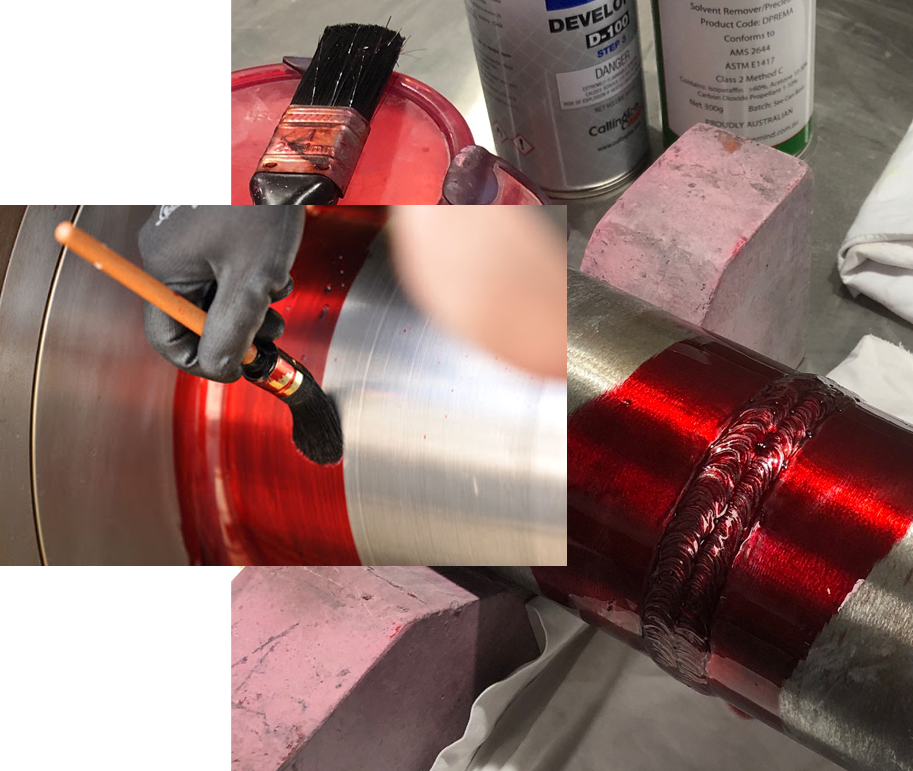Phased Array Ultrasonic Testing
Phased Array Ultrasonic Testing (PAUT) is an advanced non-destructive testing (NDT) technique that uses multiple ultrasonic elements and electronic time delays to create a focused, steerable, and programmable beam of sound waves. This allows for precise inspection of materials and structures, enabling the detection of defects such as cracks, voids, and weld flaws with high accuracy and efficiency. PAUT is widely used in industries like aerospace, oil and gas, and manufacturing for its versatility, speed, and ability to provide detailed imaging of internal structures.
- PAUT uses focused ultrasonic beams for precise inspections.
- It detects cracks, voids, and weld flaws accurately.
- Provides high-resolution images of internal structures.
- Common in aerospace, oil & gas, and manufacturing.
- Enables faster, efficient, and reliable testing.

Limitations
Phased Array Ultrasonic Testing (PAUT) has some limitations despite its advanced capabilities. The equipment and software are expensive, making the initial investment higher compared to conventional ultrasonic testing methods. It also requires skilled operators and advanced training for proper setup and accurate interpretation of results.
Surface accessibility can be a challenge, as rough or irregular surfaces may require preparation to ensure reliable testing. Additionally, PAUT generates large volumes of data, which can lead to slower processing times. Furthermore, its performance may be affected by certain materials, such as those that are highly attenuative or have coarse-grained structures, limiting its effectiveness in specific applications.

The Phased Array Ultrasonic Testing requires at least five steps:
Phased Array Ultrasonic Testing involves five steps: surface preparation, probe setup and calibration, scanning to collect data, analyzing ultrasonic signals for defects, and reporting findings with recommendations.
01
Preparation
Clean and prepare the surface to ensure proper coupling of the probe to the material.
02
Probe Configuration
Set up and calibrate the phased array probe, including adjusting parameters like frequency, angle, and focus.
03
Data Acquisition
Use the probe to scan the material, collecting ultrasonic signals that reflect from internal structures or defects.
04
Data Analysis
Interpret the acquired data, often with advanced imaging software, to identify and evaluate defects or discontinuities.
05
Reporting
Document the findings, including defect locations, sizes, and recommendations for further action if needed.
Why Choose Us for Phased Array Ultrasonic Testing?
- Our team is highly trained and experienced in PAUT.
- We provide detailed and reliable data for defect detection.
- Efficient testing and quick report generation.
- Safe for materials and structures without causing damage.
- Tailored testing for your specific industrial needs.
- High-quality service with competitive pricing.
- Clear, detailed reports with actionable insights.
1
Cutting-Edge Technology
We utilize the latest PAUT equipment for unparalleled accuracy in detecting defects.
2
Experienced Team
Our skilled technicians ensure optimal setup and interpretation for reliable results.
3
Efficient and Reliable
Fast, non-destructive testing with precise, actionable reports that meet industry standards.
PAUT is an advanced non-destructive testing technique that uses multiple ultrasonic elements to create a focused, steerable beam for precise detection of defects in materials.
PAUT is widely used in industries such as aerospace, oil and gas, manufacturing, and construction for quality control, maintenance, and safety inspections.
Unlike conventional ultrasonic testing, PAUT allows for multiple angles and focal points, offering detailed, high-resolution imaging and faster scanning.
Yes, PAUT is non-destructive, meaning it does not damage the material or structure during testing.
The duration of a PAUT inspection depends on the size and complexity of the material being tested but is generally faster than traditional testing methods due to its ability to scan multiple angles simultaneously.
Yes, we provide detailed reports with actionable insights, including the location, size, and type of any detected defects.